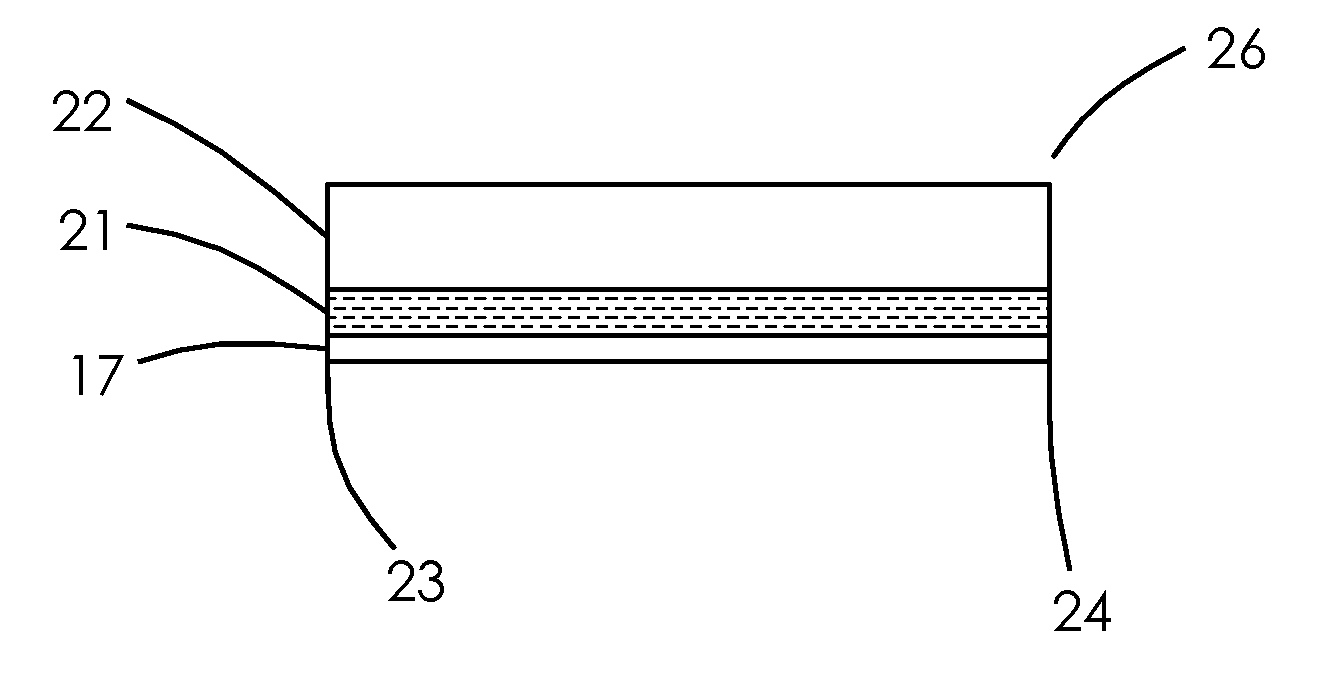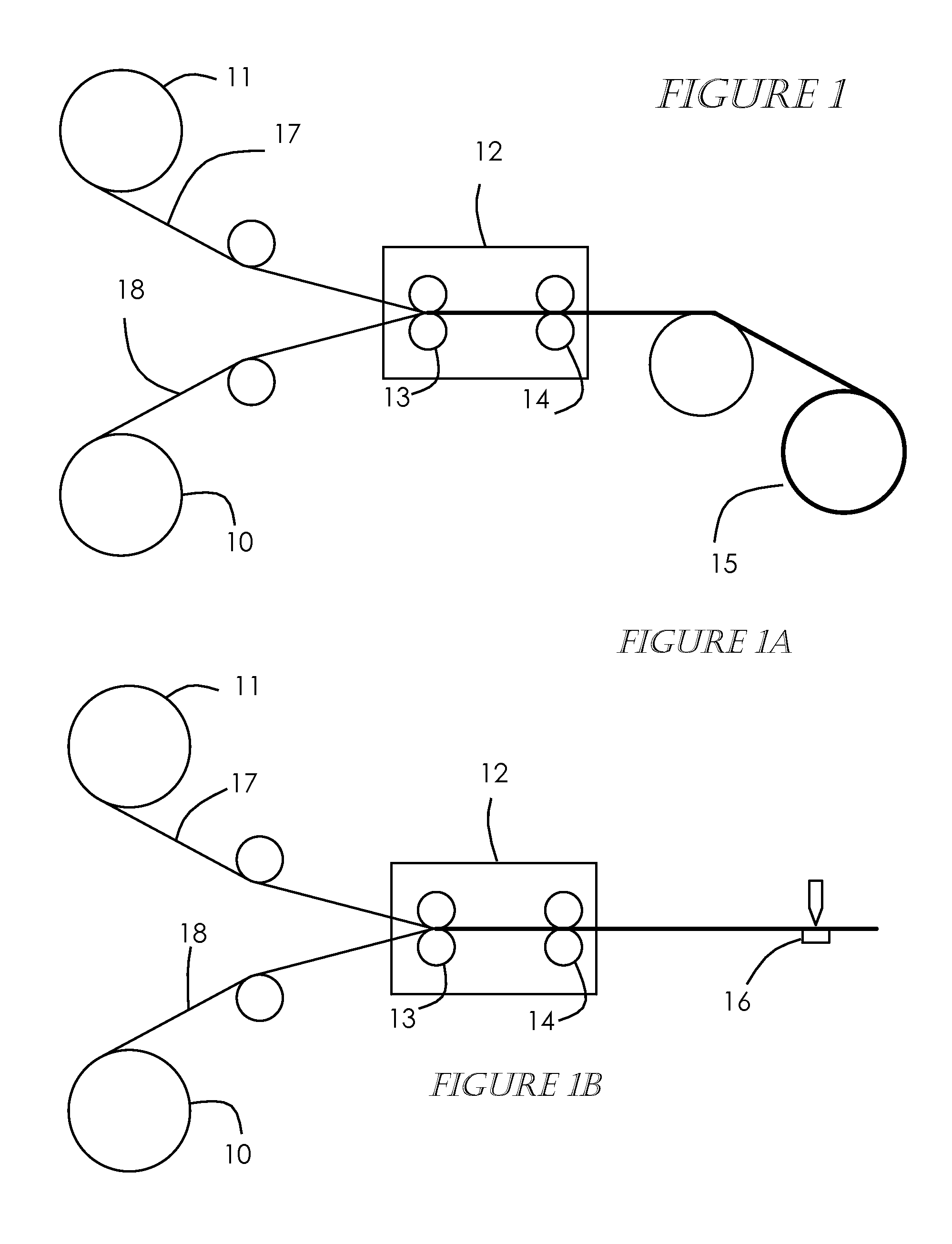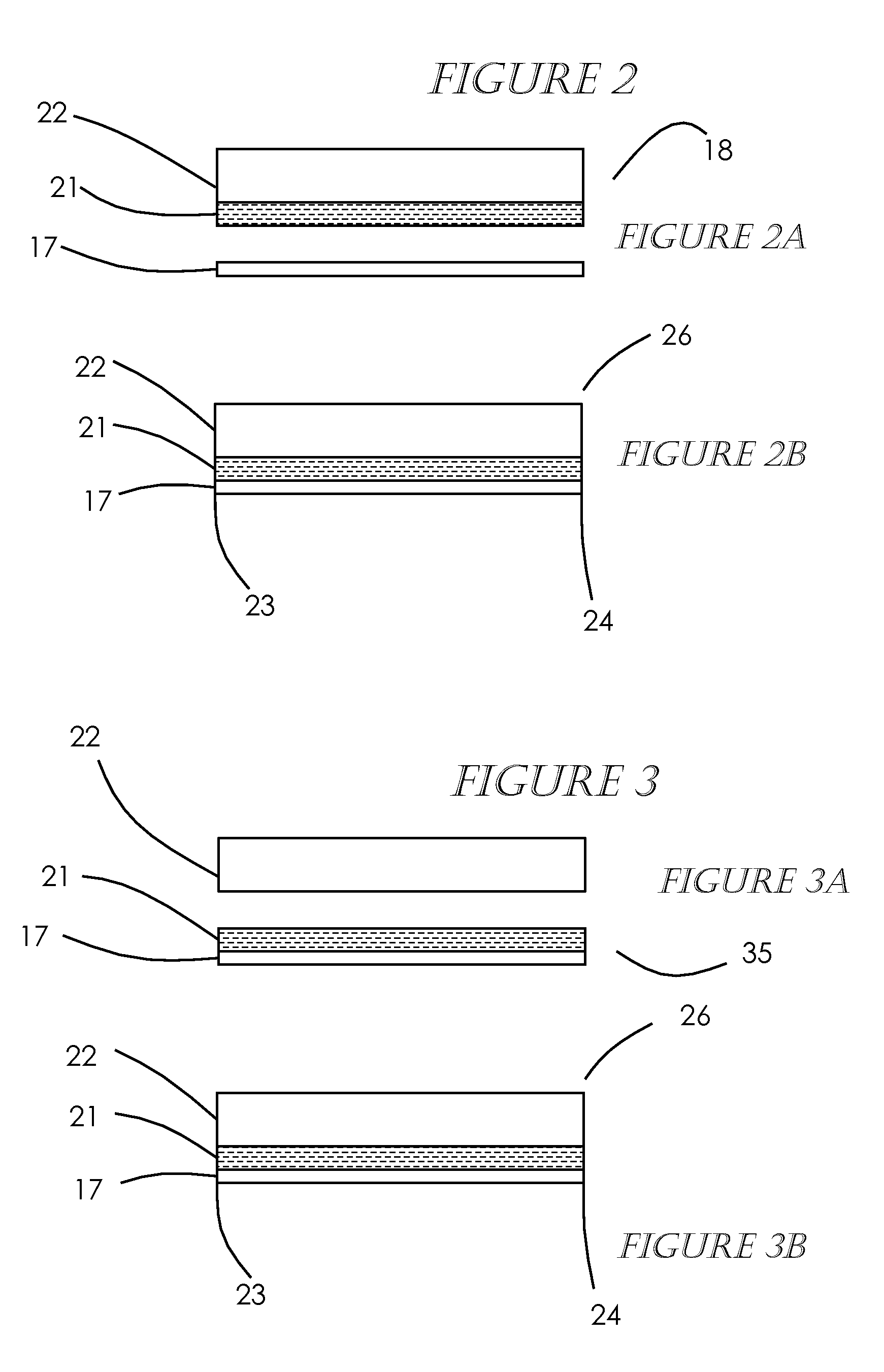Membrane electrode assembly fabrication
a technology of membrane electrodes and assembly, which is applied in the direction of cell components, electrochemical generators, chemistry apparatus and processes, etc., can solve the problems of insufficient mass production of fuel cells, difficult scaling up to high-rate production, and inconvenient use of cvd, pvd and ecd methods in fuel cells with gas phase fuel. achieve the effect of reducing production costs and ensuring mass production
- Summary
- Abstract
- Description
- Claims
- Application Information
AI Technical Summary
Benefits of technology
Problems solved by technology
Method used
Image
Examples
first embodiment
[0041]A precursor-MEA is produced in accordance with this invention by attaching or bonding a polymer electrolyte membrane to a gas diffusion layer by one of two preferred embodiments. FIGS. 1A and 1B show a first embodiment, gas diffusion electrode material (GDE) 18 such as that supplied by the E-TEK Division of PEMEAS Fuel Cell Technologies on a roll 10 is mated or bonded with a polymer electrolyte membrane material 17 such NAFION® by DuPont, also supplied on a roll 11, forming a unified structure. The GDE material can preferably be a cathode but can alternately be an anode. The two materials are unwound and roll bonded or laminated with the use of heat 12 at a temperature of about 50 C. to 200 C. and pressure 13, 14 of about 50 psi to 300 psi in such a manner that the catalyst / electrode side of the GDE is in contact with the polymer electrolyte membrane material. The temperature and pressure make the ionomer in the catalyst layer soft and adhesive to provide a good bond between t...
second embodiment
[0042]the method of producing the precursor-MEA, shown in FIGS. 3A-3B, is to use a polymer electrolyte membrane 17 onto which a catalyst / electrode 21 has been applied / bonded to one side of the polymer electrolyte membrane material, forming a 2-layer MEA 35 having the electrolyte membrane material 17 with the catalyst / electrode 21 essentially covering the entire one side of the electrolyte membrane material 17, with no need for borders or frames as is the usual practice. The 2-layer MEA 35 can preferably be a cathode but can alternately be an anode. U.S. Pat. Nos. 6,197,147; 6,933,033; and 6,855,178 teach methods of applying a catalyst / electrode to a polymer electrolyte membrane. Polymer electrolyte material with catalyst / electrodes bonded on is supplied by DuPont, W. L. Gore, and Ion Power, among others. Gas diffusion layer material (GDL) 22 such as that supplied by the E-TEK Division of PEMEAS Fuel Cell Technologies, Toray Industries, Inc. and SGL Carbon AG on a roll 40 is mated or...
PUM
| Property | Measurement | Unit |
|---|---|---|
| thick | aaaaa | aaaaa |
| pressure | aaaaa | aaaaa |
| dimensions | aaaaa | aaaaa |
Abstract
Description
Claims
Application Information
 Login to View More
Login to View More - R&D
- Intellectual Property
- Life Sciences
- Materials
- Tech Scout
- Unparalleled Data Quality
- Higher Quality Content
- 60% Fewer Hallucinations
Browse by: Latest US Patents, China's latest patents, Technical Efficacy Thesaurus, Application Domain, Technology Topic, Popular Technical Reports.
© 2025 PatSnap. All rights reserved.Legal|Privacy policy|Modern Slavery Act Transparency Statement|Sitemap|About US| Contact US: help@patsnap.com



